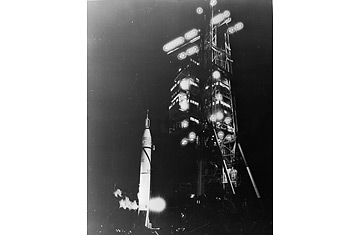
Jan. 31, 1958 — The U.S. gets it right, launching the 18-in., 80-lb. Explorer 1 satellite into orbit. This time, it was no pipsqueak Vanguard carrying the payload aloft, but a comparatively huge Jupiter-C rocket. Designed in part by expat German engineer Wernher von Braun, the Jupiter-C was a great-grandchild of the V-2 missiles that were launched against London (with less happy results) during the latter days of World War II. Explorer 1 carried a radiation detector designed by University of Iowa astronomer James Van Allen and, while in orbit, detected the eponymous Van Allen radiation belts (swaths of charged particles around the earth that contribute to the swirling lights of the polar auroras), proving that a satellite could not only make headlines but also work for science.